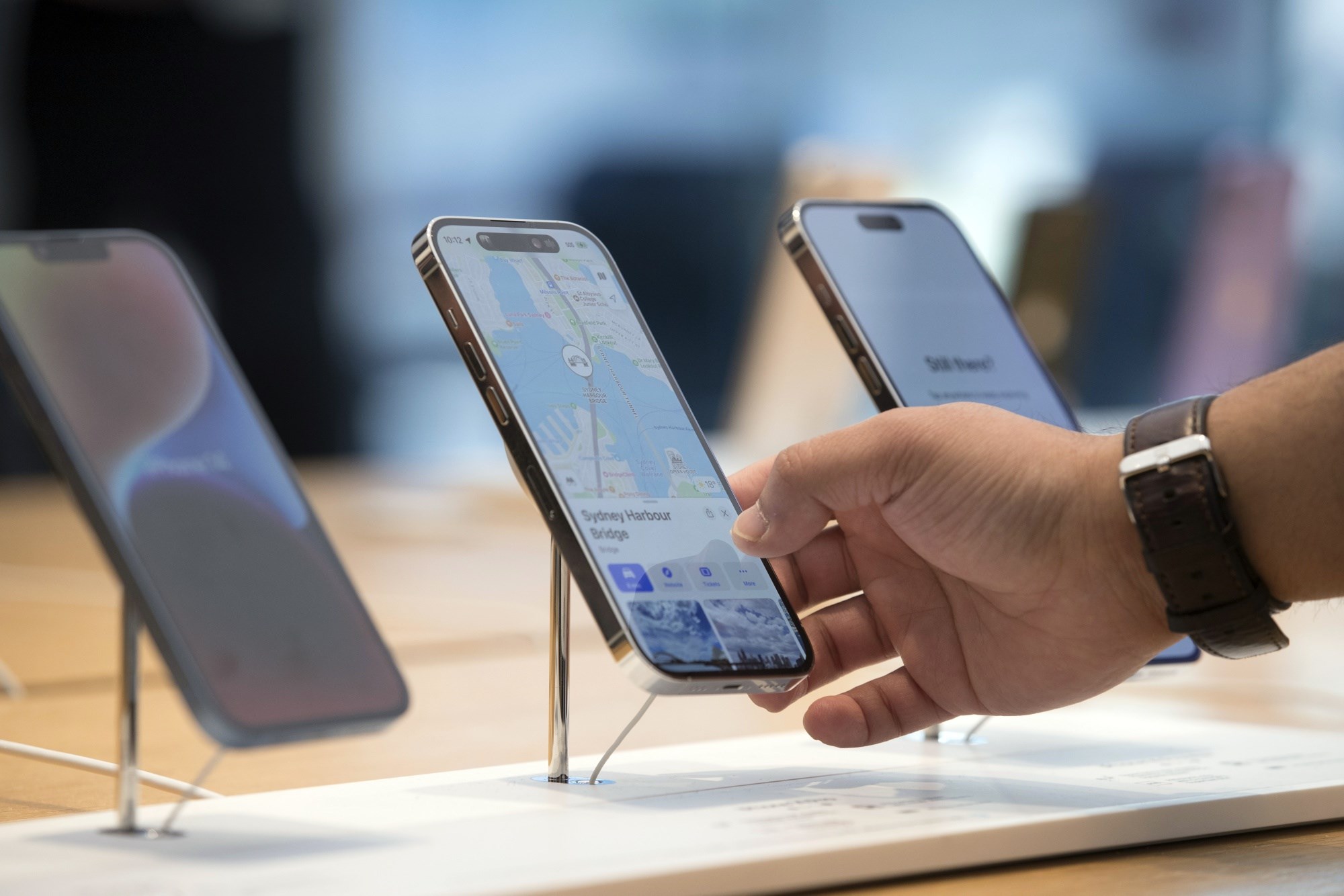The Rise of the Used Smartphone Market
In today’s fast-paced world, technology is constantly evolving, and the smartphone market is no exception. With new models hitting the shelves every year, people are eager to upgrade their devices and keep up with the latest trends. However, this desire for the newest and the best has led to an unforeseen consequence: a significant rise in the used smartphone market.
Many factors contribute to the increasing popularity of buying used smartphones. One of the main reasons is the desire for affordability. Buying a brand-new smartphone can be prohibitively expensive for some, especially when flagship models are priced in the range of hundreds or even thousands of dollars. In contrast, purchasing a used smartphone allows consumers to access high-quality devices at a fraction of the cost.
Moreover, the used smartphone market offers a wide range of options. Consumers have the flexibility to choose from various models and brands that are no longer available in the market. This is particularly advantageous for individuals who prefer specific features or design elements that may no longer be present in newer models.
Furthermore, the rising awareness of environmental sustainability has contributed to the surge in the used smartphone market. Many individuals are now seeking ways to reduce electronic waste and extend the lifespan of electronic devices. By choosing to purchase a used smartphone, consumers are actively participating in the circular economy by extending the lifespan of products and reducing their ecological impact.
Additionally, the rapid advancement of technology and the short product life cycle of smartphones have led to an increase in the frequency of smartphone upgrades. As a result, many relatively new smartphones end up in the used market. These devices are often in excellent condition, providing consumers with a cost-effective alternative to purchasing a brand-new phone.
Market Saturation: Everyone Already Owns a Smartphone
In recent years, the global smartphone market has experienced a significant level of saturation. Almost everyone you meet owns a smartphone, making it a ubiquitous device in today’s society. This saturation has had a profound impact on smartphone sales, resulting in a decline in demand for new devices.
A primary reason for market saturation is that most consumers already own a smartphone that meets their needs. In the past, smartphones were considered a luxury item, and only a small percentage of the population could afford them. However, as prices have become more affordable over time, smartphone ownership has become commonplace.
Furthermore, smartphones have become an essential tool for both personal and professional use. They serve as a communication device, an entertainment center, a navigation system, and a gateway to the internet. With such versatile capabilities, there is less incentive for individuals to upgrade to a new device unless their current smartphone is outdated or malfunctioning.
Another factor contributing to market saturation is the longer lifespan of smartphones. Manufacturers have improved the durability and quality of devices, ensuring that they last for several years. This means that consumers can hold onto their smartphones for longer periods without experiencing performance issues. As a result, the replacement cycle has lengthened, reducing the demand for new smartphones.
Moreover, the lack of groundbreaking innovations in recent smartphone releases has also contributed to market saturation. In the early days of smartphones, each new model brought significant advancements in technology and features. However, in recent years, the pace of innovation has slowed, with incremental upgrades rather than revolutionary changes. This has further dampened the desire for consumers to upgrade their devices.
While market saturation presents a challenge for smartphone manufacturers, it also opens up opportunities for the used smartphone market. As existing smartphone owners look for affordable alternatives or trade-in options for their current devices, the used smartphone market can cater to their needs by offering a wide range of pre-owned devices at competitive prices.
Decreased Innovation and Lack of Excitement
In recent years, the smartphone industry has experienced a noticeable decline in innovation and a lack of excitement surrounding new device releases. This has had a significant impact on consumer interest and has contributed to the stagnation of smartphone sales.
One of the key factors contributing to this decreased innovation is the plateauing of technological advancements. In the early years of smartphones, each new release brought revolutionary changes and features that captivated consumers. However, as the market has matured, the pace of breakthrough innovations has slowed down. As a result, new smartphone models often offer only incremental upgrades compared to their predecessors.
Additionally, the lack of differentiation among smartphone brands has led to a sense of homogeneity in the market. Many flagship devices from different manufacturers now boast similar features, designs, and performance capabilities. This has resulted in a commoditization of smartphones, where consumers perceive little distinction between different brands, making it difficult for manufacturers to stand out and generate excitement.
Besides, the lack of innovation and excitement can also be attributed to market saturation. As most consumers already own smartphones that meet their needs, they are less motivated to upgrade to new devices that offer marginal improvements. This has made it increasingly challenging for manufacturers to create a strong demand for their latest releases.
Moreover, the increasing prices of flagship smartphones have played a role in dampening excitement and reducing consumer interest. With high-end devices now reaching price points of several hundred or even thousands of dollars, consumers are becoming more hesitant to invest in new models, especially when the benefits and innovations they offer are not significant enough to justify the cost.
Furthermore, the overall saturation of the smartphone market has led to a more mature and discerning consumer base. Consumers are now more informed and tech-savvy, and they expect substantial improvements and innovative features with each new smartphone release. When these expectations are not met, it leads to a sense of disappointment and disinterest in the market.
In order to reignite excitement and boost smartphone sales, manufacturers must focus on delivering genuinely groundbreaking innovations that offer tangible benefits to consumers. By listening to customer feedback and addressing their pain points, manufacturers can create devices that truly inspire and captivate users, rekindling interest and driving sales in the saturated smartphone market.
Lengthening Replacement Cycles
One of the contributing factors to the decline in smartphone sales is the lengthening replacement cycles among consumers. In the early days of smartphones, consumers were eager to upgrade their devices every couple of years to enjoy the latest technology and features. However, as smartphones have become more advanced and durable, the need for frequent upgrades has diminished.
The prolonged replacement cycle can be attributed to several factors. Firstly, smartphones are now equipped with robust hardware and software that can handle a wide range of tasks. This means that even older models can still perform everyday functions such as browsing the internet, using social media, and running essential applications without significant issues. As a result, consumers have less incentive to upgrade to a new device when their current one meets their needs adequately.
Furthermore, the cost of flagship smartphones has increased significantly over the years. Many consumers are unwilling to invest a considerable amount of money into a new device when their current one is still functioning adequately. As a result, they opt to hold on to their smartphones for longer periods, waiting for more compelling reasons to upgrade.
Additionally, the slowdown in technological advancements has contributed to longer replacement cycles. In the early stages of smartphone development, each new release introduced breakthrough features and capabilities that enticed consumers to upgrade. However, in recent years, the pace of innovation has slowed down, with fewer revolutionary changes and more incremental upgrades. This has reduced the urgency for consumers to replace their current devices with newer models.
The increasing availability of affordable mid-range and budget smartphones has also played a role in lengthening replacement cycles. Consumers who are conscious of their budgets may opt to purchase lower-cost devices that still offer decent performance and features. These devices often serve their purpose well and can delay the need for an immediate upgrade.
Moreover, improvements in software optimization and updates have helped extend the lifespan of smartphones. Manufacturers now provide regular software updates to improve performance, security, and introduce new features. These updates allow older devices to continue running smoothly and access the latest software functionalities, reducing the need for immediate device replacement.
As a result of these factors, consumers are now more likely to hold on to their smartphones for longer durations, leading to a decline in overall sales and a shift towards a more sustainable and cost-effective approach to device ownership. Manufacturers will need to adapt to this change by focusing on creating value-added features, enhanced user experiences, and longer-lasting devices to attract consumers and encourage more frequent upgrades.
Economic Uncertainty and Reduced Disposable Income
Economic uncertainty and reduced disposable income have had a significant impact on the decline in smartphone sales in recent years. In times of economic hardship, people tend to tighten their budgets and prioritize essential expenses, leading to a decrease in discretionary purchases such as smartphones.
During periods of economic uncertainty, individuals become more cautious with their spending. They are hesitant to invest a substantial amount of money in a new smartphone when there are uncertainties about job security, income stability, and future financial obligations. Instead, they opt to prolong the lifespan of their current devices and delay the purchase of a new smartphone until their financial situation improves.
Reduced disposable income also plays a crucial role in the decline of smartphone sales. With less money available to spend on non-essential items, consumers are less likely to prioritize purchasing a new smartphone. They are more likely to allocate their limited resources towards more immediate needs and essential expenses, such as housing, utilities, and groceries.
Additionally, changes in consumer behavior and preferences have also contributed to reduced spending on smartphones. Many consumers nowadays are searching for more affordable options or are opting for alternative devices that can perform similar functions, such as refurbished smartphones or mid-range models. This shift in consumer priorities and preferences further impacts the overall demand for new smartphones.
Furthermore, economic uncertainty can have an impact on consumer confidence. When people are uncertain about the future and economic prospects, they tend to avoid making large purchases and opt for a more cautious approach to spending. This leads to a decrease in consumer demand for new smartphones and a longer replacement cycle as individuals become more hesitant to upgrade their devices.
The impact of economic uncertainty and reduced disposable income on smartphone sales is not confined to specific regions or markets. It is a global phenomenon that affects consumers across different income levels and demographics. As such, smartphone manufacturers must be mindful of these economic factors and adjust their pricing strategies, offer more affordable options, and provide compelling value propositions to attract consumers even during challenging economic times.
Overall, economic uncertainty and reduced disposable income have contributed significantly to the decline in smartphone sales. To counteract these challenges, manufacturers should focus on offering budget-friendly options, providing attractive financing plans, and demonstrating the long-term value and benefits of owning a new smartphone despite temporary economic setbacks.
Global Trade Tensions and Tariffs Impacting Prices
Global trade tensions and the implementation of tariffs have had a profound impact on the smartphone industry, leading to increased prices and a decline in sales. The imposition of trade barriers and tariffs has disrupted the global supply chain and increased manufacturing costs, ultimately affecting the final retail prices of smartphones.
Trade tensions between major economies, such as the United States, China, and Europe, have resulted in the imposition of tariffs on various imported goods, including smartphones. These tariffs have led to higher production costs for smartphone manufacturers, who often rely on global supply chains and component sourcing from different countries. As a result, manufacturers pass on these increased costs to consumers, resulting in higher retail prices for smartphones.
Moreover, the uncertainty surrounding trade policies and the possibility of further escalations in trade disputes have dampened consumer confidence and affected overall demand for smartphones. Consumers may be hesitant to make a significant financial investment in a new smartphone when the possibility of additional tariffs or trade restrictions could arise, impacting the value and affordability of their purchase.
In addition to the direct impact on prices, global trade tensions have also disrupted the supply chain and logistics of smartphone manufacturers. With the implementation of trade barriers and tariffs, companies must navigate complex regulations and restrictions, leading to delays in production and delivery timelines. These disruptions can further impact the availability of smartphones in the market and result in a decline in sales.
Another consequence of trade tensions and tariffs is the potential for retaliatory measures taken by affected countries. Tariffs imposed by one country may lead to countermeasures from others, creating a ripple effect throughout the global economy. This can lead to higher costs not only for manufacturers but also for consumers, as the increased tariffs can hinder the affordability of smartphones in affected markets.
The impact of global trade tensions and tariffs on prices and sales of smartphones is a complex issue with wide-ranging implications. To mitigate these challenges, smartphone manufacturers may consider diversifying their supply chains, exploring alternative sourcing options, or strategically positioning their production facilities to minimize the impact of trade disruptions. Additionally, trade negotiations and efforts to promote stability and cooperation among nations can help alleviate the uncertainties and restore consumer confidence in the smartphone market.
Speculation of Upcoming Technological Advances
In the ever-evolving world of technology, there is always speculation and anticipation surrounding upcoming technological advances in the smartphone industry. This speculation plays a significant role in impacting consumer buying behavior and has contributed to the decline in smartphone sales in recent years.
Consumers are constantly seeking the latest and most innovative features in their smartphones. With rumors and leaks about upcoming technological advancements, such as improved camera capabilities, enhanced biometric security, foldable screens, and 5G connectivity, consumers may choose to wait before purchasing a new smartphone. They anticipate that these advancements will provide them with a more compelling reason to upgrade their current devices and experience a significant leap in technology.
The speculations and rumors surrounding upcoming technological advances create a sense of excitement and curiosity among consumers. They become more discerning and willing to delay their smartphone purchase until the anticipated features are available. This behavior results in an extended replacement cycle as consumers hold on to their current smartphones in anticipation of the latest technological breakthroughs.
One of the significant examples of this is the rise of foldable smartphones. The potential of having a device that combines the portability of a smartphone and the larger screen size of a tablet has generated significant excitement among consumers. However, until foldable smartphones become more accessible and affordable, consumers may choose to wait before making a purchase, hoping for improved designs and more advanced technology integration.
Another area of speculation is the rollout of 5G network technology. The promises of faster speeds, lower latency, and enhanced connectivity have generated considerable interest among consumers. With the anticipation of 5G-enabled smartphones becoming widely available, some consumers may decide to hold off on purchasing a new device to take advantage of the next-generation network capabilities.
Furthermore, rumors and speculation about upcoming technological advances can create a sense of uncertainty among consumers. They may question whether the current models on the market will quickly become outdated or if it is worth investing in a device that may soon be surpassed by newer and more advanced options. This uncertainty can lead to a decrease in smartphone sales as consumers become hesitant to make a purchase without clarity on the future of technology.
Overcoming the impact of speculations on upcoming technological advances requires smartphone manufacturers to stay at the forefront of innovation. By delivering innovative features and regularly introducing new technology advancements, manufacturers can alleviate consumer concerns and create a sense of urgency and excitement to upgrade to the latest devices. Additionally, clear and transparent communication about future product roadmaps and advancements can help manage consumer expectations and drive sales in a competitive market.
The Future of Smartphones: Foldable Devices
The smartphone industry is on the cusp of a major revolution with the emergence of foldable devices. As technology continues to evolve, manufacturers are exploring innovative designs that offer users the convenience of a smartphone and the expansive screen real estate of a tablet. Foldable devices herald a new era in smartphone technology, captivating consumers and shaping the future of the industry.
Foldable smartphones feature flexible displays that can fold or unfold, allowing users to switch between a compact smartphone form factor and a larger tablet-like experience. This revolutionary design breaks the boundaries of traditional smartphones and opens up new possibilities for multitasking, productivity, and media consumption.
With a larger unfolded display, users can enjoy enhanced productivity by simultaneously running multiple applications side-by-side, enabling seamless multitasking. The additional screen space makes it easier to browse the internet, read documents, edit photos, and watch videos, providing a more immersive experience.
The compact form factor of foldable devices is another enticing aspect. When folded, they occupy less space in pockets or bags, making them more portable and convenient for everyday use. This eliminates the need to carry both a smartphone and a tablet separately, streamlining one’s digital life.
Moreover, the future potential for foldable devices goes beyond smartphones and tablets. The flexible display technology can be adapted to other form factors, such as wearable devices or foldable laptops, further expanding the scope and versatility of these devices.
However, challenges remain in perfecting and popularizing foldable smartphones. The technology is still in its early stages, and manufacturers are actively addressing concerns related to durability, crease visibility, and cost. Ensuring that the foldable displays can withstand constant folding and unfolding without compromising their functionality or longevity is crucial for long-term success.
Additionally, there is a need for developers to optimize applications and user interfaces to make the most of the unique features and screen transitions of foldable devices. Ensuring app compatibility and delivering a seamless user experience across various screen sizes and configurations will be key to driving consumer adoption.
Despite these challenges, the future of smartphones undoubtedly lies in the realm of foldable devices. As technology advances and manufacturers refine their designs, these devices are poised to transform how we interact with technology. The ability to seamlessly switch between a smartphone and a tablet-like experience offers immense potential for productivity, entertainment, and creativity.
As consumer demand for larger screens and increased functionality continues to grow, foldable smartphones represent a significant step forward in meeting those needs. Their flexible displays and innovative designs bring a new level of convenience and versatility to mobile devices, paving the way for a future where smartphones can do more than ever before.
Impact of COVID-19 on Smartphone Sales
The COVID-19 pandemic has had a significant impact on various industries, including the smartphone market. As countries implemented lockdowns, travel restrictions, and social distancing measures, consumer behavior and priorities shifted, resulting in both positive and negative effects on smartphone sales.
One immediate consequence of the pandemic was the disruption to global supply chains. Smartphone manufacturers heavily rely on components and production facilities located in different countries, particularly in Asia. The temporary closure of factories and limitations on international trade led to a slowdown in production and a reduction in the availability of new devices, affecting sales worldwide.
Furthermore, the economic effects of the pandemic caused many individuals to tighten their budgets and prioritize essential expenses over discretionary purchases. With job losses, reduced incomes, and financial uncertainties, consumers became more cautious about spending on non-essential items, including smartphones. This decline in purchasing power and consumer confidence further dampened smartphone sales.
However, the pandemic also created opportunities for certain segments of the smartphone market. With increased remote working, online learning, and reliance on digital communication and entertainment, there was a growing demand for smartphones that offered strong connectivity, superior camera capabilities, and overall performance. As a result, mid-range and budget smartphones, which provide decent performance at affordable prices, experienced increased demand.
Additionally, the shift in consumer behavior towards online shopping and e-commerce during the pandemic helped mitigate some of the decline in smartphone sales. Online platforms and retailers experienced a surge in smartphone purchases as consumers sought to replace their older devices or adapt to the changing digital landscape. The convenience and safety of online shopping played a crucial role in sustaining smartphone sales during uncertain times.
Another aspect of the pandemic’s impact was the rapid adoption of contactless technology and the increased importance of hygiene. As a result, features such as face recognition, fingerprint sensors, and touchless payments gained more prominence, influencing consumer preferences when considering smartphone purchases.
Overall, the impact of COVID-19 on smartphone sales has been mixed. While there were challenges due to disrupted supply chains, reduced consumer spending, and economic uncertainties, certain segments of the market experienced increased demand driven by remote work, online learning, and evolving consumer preferences. As the world adjusts to the new normal, smartphone manufacturers will need to adapt their strategies, prioritize affordable and relevant features, and emphasize digital connectivity and convenience to navigate the evolving landscape of consumer needs and preferences.
The Importance of Evaluation and Comparison Before Purchasing
With a wide range of smartphones available in the market, making an informed decision before purchasing is crucial. Evaluation and comparison play an essential role in ensuring that consumers choose the right device that aligns with their needs, preferences, and budget. There are several key reasons why evaluating and comparing smartphones before making a purchase is of utmost importance.
Firstly, evaluating smartphones allows consumers to assess their specific requirements and consider the features and capabilities that matter most to them. By understanding their needs, such as camera quality, battery life, processing power, storage capacity, or even design aesthetics, consumers can shortlist devices that offer the best fit.
Comparing different smartphones helps consumers understand the strengths and weaknesses of each device. It enables them to gain a comprehensive perspective on various aspects, including performance, user interface, display quality, software updates, and durability. Through this comparison, consumers can identify the device that best meets their expectations and offers the most value for their investment.
Moreover, evaluation and comparison help consumers make sound financial decisions. By considering factors such as the device’s price, long-term durability, and future-proofing, consumers can assess whether the smartphone is a worthwhile investment. This analysis takes into account not only the initial purchase price but also factors in the overall cost of ownership, including potential repair costs, software support, and future upgradeability.
Another crucial reason for evaluation and comparison is to minimize buyer’s remorse. By thoroughly evaluating and comparing different options, consumers can make a more informed choice, reducing the likelihood of disappointment or regret after the purchase. It allows consumers to feel confident in their decision and ensures that they have chosen the smartphone that best aligns with their preferences and needs.
Additionally, evaluation and comparison play a role in understanding the market landscape and the latest trends. Through research, consumers can stay updated on new smartphone releases, advancements in technology, and emerging features. This knowledge enables them to make informed choices and be aware of the latest innovations in the market.
Lastly, evaluation and comparison also encourage competition among smartphone manufacturers. By actively comparing devices, consumers contribute to the demand for better features, improved performance, and competitive pricing. This fosters innovation within the industry and encourages manufacturers to strive for excellence in order to attract and retain customers.






